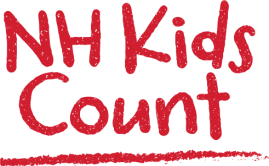Early Childhood & Public Education
The earliest years of a child's life are the most critical for brain development, learning, and long-term success—yet access to affordable, high-quality early care and education remains out of reach for too many New Hampshire families. With 74 percent of young children living in households where all parents work, the need for reliable child care has never been greater. Meanwhile, public school enrollment continues to decline, and reading proficiency rates have fallen significantly over the past decade, with only 36 percent of fourth-graders reading at grade level. These challenges demand urgent attention and investment, as research consistently shows that high-quality early care and education programs set children on a path toward healthier development, stronger academic outcomes, and greater economic opportunity throughout their lives.
Child Care
Access to affordable, high-quality child care helps Granite State children and their families thrive.
- In New Hampshire, 74 percent of children under age six (54,000 children) live in households where all of their parents are working.1 To be reliable employees who contribute to New Hampshire’s economy, these families need access to affordable, high-quality child care. Yet, between 2022 and 2024, tuition for a family with an infant and a four-year-old in center-based care averaged nearly $30,000—approximately 19.6 percent of a married couple’s income, 40.6 percent of a single father’s income, and 60 percent of a single mother’s income.2
- Children’s brains develop faster during the first three years than at any other time in life. High-quality child care prioritizes skilled teachers and safe environments to play, explore, and learn, which are critical to helping young children develop.3 High-quality child care also helps ensure children have access to developmental screenings. Research shows that children who receive early intervention services are more likely to achieve positive outcomes, improve school readiness, and reduce the need for special education services once school-aged.4 Despite the positive outcomes of early intervention services, less than half (42 percent) of New Hampshire children aged 9-35 months received developmental screening in 2023.5
- The New Hampshire Child Care Scholarship Program is helping approximately 4,730 children and their families access affordable child care by capping child care expenses at seven percent of the households’ income. Families earning up to 85 percent of the state-median income can qualify for a scholarship (up to an annual income of $113,432 for a family of four).6 Child care scholarships may impact children’s social-emotional and cognitive development in two ways: indirectly, through increased family income, which reduces family stress and limits adverse childhood experiences, and directly, through access to high-quality child care.7
![]()
Data Spotlight
Child Care Availability
Despite growing demand, New Hampshire saw an eight percent decline in child care workers between 2023 and 2024. In 2024, the average early childhood educator earned $34,570. While this was an increase of $2,000 compared to 2023, it still trails the average yearly salary of retail workers ($35,440). The decline in the child care workforce is contributing to a growing gap in available slots. The average number of licensed child care slots in New Hampshire was 44,644 - approximately 9,100 slots short of the number of children who may need them.8
Early Education
New Hampshire children need better access to early education opportunities.
- High-quality early education programs for children ages 0 to 5, including preschool and kindergarten, help set the stage for future skill development, health, well-being, and learning. Yet only 5,067 children (about 20% of the state’s three- and four-year-olds) were enrolled in public preschool programs during the 2023-24 school year.9 New Hampshire is one of just seven states that do not offer publicly funded preschool, meaning most families must pay for private preschool.
- Approximately 1,020 three- and four-year-olds in New Hampshire are enrolled in Head Start, a federally funded program that provides early childhood education, health, nutrition, and parent involvement to low-income children.1 To qualify for Head Start, families need to have an income at or below the federal poverty level. Children in foster care and families experiencing homelessness or accessing other federal assistance programs like TANF or SNAP are also eligible for Head Start, regardless of income.10
- A 2023 study by the Massachusetts Institute of Technology found that attending preschool at age 4 led to fewer behavioral problems later in school, including fewer absences, suspensions, and legal-system problems. Four-year-olds who attended preschool were also more likely to take the SAT and to attend college.11
![]()
Solving Problems Through Policy Change
Full-Day Kindergarten
In 2017, New Futures championed legislation to fund full-day kindergarten. Before this, school districts were required to offer half-day kindergarten, which was inaccessible for working families. The policy left implementation up to school districts, and as of 2025, all but two school districts (Londonderry and Timberlane) offer full-day kindergarten in their districts.
Public Education
Enrollment and student performance are declining in New Hampshire.
- More than 165,000 children were enrolled in New Hampshire’s public and public charter schools in the fall of 2023. Since 2002, public school enrollment numbers have decreased by more than 20 percent due to decreases in the overall child population and the introduction of school vouchers. 11,851 students attend Manchester schools, 9,773 attend Nashua schools, and 4,065 students attend Bedford schools, representing the largest school districts in New Hampshire.12
- Proficiency in reading by the end of third grade is a crucial marker in a child’s educational development. Children who reach fourth grade without being able to read proficiently are more likely to drop out of high school, reducing their earnings potential and chances for success. In New Hampshire, only 36 percent of children were reading at or above proficiency in 2023. Reading proficiency has been trending down for nearly a decade—in 2015, 46 percent of fourth-graders were reading at or above proficient levels.13
- In 2025, New Hampshire lawmakers passed universal school vouchers, called Education Freedom Accounts. The EFAs are state-funded grants that students may use to attend private schools or to cover costs associated with homeschooling. The grant amount is equal to what the state would have sent to the student’s public school, meaning EFAs are directing money away from public schools. As many as 10,000 children will benefit from these grants in 2025 at an average cost of $5,204 per student.14 Studies indicate that, instead of boosting student achievement in equitable ways, voucher programs place significant demands on local budgets due to fixed expenses for school districts. School voucher programs are also associated with successfully segregating schools by class and race.15
![]()
Data Spotlight
Children with Disabilities
Over 12,000 children in New Hampshire have a physical, emotional, or behavioral disability. For over 40 years, children with disabilities have received a free, appropriate education thanks to the Individuals with Disabilities Education Act (IDEA). Children are offered supports that are mapped by teachers, administrators, and parents through the child’s Individualized Education Program (IEP). Before the passage of IDEA, states could refuse to accommodate students with disabilities. Funding for IDEA is administered through the federal Department of Education.
Policy Considerations:
To improve access to early care, early education, and public education, New Hampshire should adopt policies that:
- •Invest in strategies that expand access to child care for families through the New Hampshire Child Care Scholarship Fund.
- •Expand access to developmental screening programs and early intervention programs for young children.
- •in evidence-informed, age-appropriate, substance misuse prevention programs to reduce negative outcomes for children who have experienced ACEs.
- •Support access to affordable pre-K programming for all families.
- •Support pipelines for early childhood educators, and support retention and advancement options for educators once they enter the profession.
References
- Children under age 6 with all available parents in the labor force | KIDS COUNT Data Center. (2024, September). Retrieved July 21, 2025, from https://datacenter.aecf.org/data/tables/5057-children-under-age-6-with-all-available-parents-in-the-labor-force?loc=1&loct=2#detailed/2/31/false/2545,37,36,35/any/11472,11473
- Heller, N. (2025b, May 26). Workforce for early childhood care and education declined 8 percent in 2024, child care tuition rates remain high - New Hampshire Fiscal Policy Institute. New Hampshire Fiscal Policy Institute. Retrieved July 21, 2025, from https://nhfpi.org/resource/workforce-for-early-childhood-care-and-education-declined-8-percent-in-2024-child-care-tuition-rates-remain-high/
- Workman, S., & Ullrich, R. (2017). Quality 101: Identifying the core components of a High-Quality Early Childhood Program. In Center for American Progress. Retrieved July 21, 2025, from https://www.americanprogress.org/article/quality-101-identifying-the-core-components-of-a-high-quality-early-childhood-program/
- Fielkow, S. (2023, March 22). Children’s Hospital New Orleans. Children’s Hospital New Orleans. Retrieved July 21, 2025, from https://www.manningchildrens.org/news-blog/2023/march/importance-of-early-intervention-as-it-relates-t/
- Children ages 9 months to 35 months who received a developmental screening | KIDS COUNT Data Center. (2025, April). Retrieved August 18, 2025, from https://datacenter.aecf.org/data/tables/11983-children-ages-9-months-to-35-months-who-received-a-developmental-screening?loc=31&loct=2#detailed/2/31/false/2490,2105,2043,1769,1696,1648,1603/any/23610,23611
- Heller, N. (2025, April 30). 5 Things You Need to Know about the New Hampshire Early Childhood Care and Education System Right Now. New Hampshire Fiscal Policy Institute. https://nhfpi.org/blog/5-things-you-need-to-know-about-the-new-hampshire-early-childhood-care-and-education-system-right-now
- Prenatal-to-3 Policy Impact Center. (2023, December 18). Child care Subsidies - Prenatal-to-3 Policy Impact Center. https://pn3policy.org/pn-3-state-policy-roadmap-2023/us/child-care-subsidies/
- Heller, N. (2025a, February 28). The economic impact of the Granite State’s child care shortage - New Hampshire Fiscal Policy Institute. New Hampshire Fiscal Policy Institute. Retrieved July 21, 2025, from https://nhfpi.org/resource/the-economic-impact-of-the-granite-states-child-care-shortage/
- National Institute for Early Education Research. (2024). New Hampshire. Retrieved July 18, 2025, from https://nieer.org/yearbook/2024/state-profiles/new-hampshire
- How to apply | HeadStart.gov. (2025, February 18). HeadStart.gov. https://headstart.gov/how-apply
- Study: Preschool gives a big boost to college attendance. (2023, February 8). MIT News | Massachusetts Institute of Technology. https://news.mit.edu/2023/study-preschool-gives-big-boost-college-attendance-0208
- Student enrollment continues to slide in the Granite State. (2023, November 17). Department of Education. Retrieved July 21, 2025, from https://www.education.nh.gov/news-and-media/student-enrollment-continues-slide-granite-state
- Fourth grade reading achievement levels | KIDS COUNT Data Center. (2025, January). Retrieved July 24, 2025, from https://datacenter.aecf.org/data/tables/5116-fourth-grade-reading-achievement-levels?loc=31&loct=2#detailed/2/31/false/1096,1095,1729,871,573,36,867,38,18,16/1185,1186,1187,1188/11560
- New Hampshire becomes 18th state with a universal private school choice program – Ballotpedia News. (2025, June 16). https://news.ballotpedia.org/2025/06/16/new-hampshire-becomes-18th-state-with-a-universal-private-school-choice-program/
- First Focus on Children. (2025, January 31). School Vouchers and the growing threat to public education | First Focus on Children. https://firstfocus.org/resource/school-vouchers-issue-brief/



